 |
 |
 |
 |
Gopher Block Gopher Wire Roll- Stainless Steel
Our stainless steel gopher wire rolls are designed to provide long term protection against gophers intrusion. Gopher Block UHD is constructed of T304, 18-8 stainless steel mesh which provides an extreme level of in-ground rot resistance even when installed below a lawn. This high quality steel provides 12+ years of in-ground protection. The 3/4” hexagonal opening stops all gophers; young and mature, while allowing your plant and grass roots to grow unencumbered. (University of California, Statewide Integrated Pest Management Program, Publication 7433)
- Square Footage Per Roll: 500
- Material: Stainless Steel (T304, 18-8)
- Estimated Material Lifespan: 12+ years
- Mesh Opening: 3/4" Hexagonal
- Fast & Free Shipping: Orders shipping to California are typically delivered within two business days.
|
|
 |
 |
 |
 |
 |
 |
 |
 |
 |
 |
 |
Features
Gopher Block™: Specifically Designed for Gopher Protection.
Strong
Constructed from heavy-duty stainless-steel.
Permeable
Allows for water to pass through for grass and plant roots.
Blocks Mature Gophers
Blocks fully grown gophers from passing through.
Blocks Young Gophers
Blocks young and developing gophers from passing trough.
Rot Resistant
The stainless steel mesh provides ultra-high resistance against underground rotting.
Allows Plant Growth
The 3/4" mesh size will not choke roots allowing for your plants to grow.
Allows Lawn Root Growth
Healthy lawn growth is not effected due to the 3/4" mesh size.
Designed Specifically for Gophers
Not just "fancy chicken wire", Gopher Block™ is designed specifically for gopher protection.
Reliable Protection From Gopher Intrusion
Gopher Block™ gopher wire rolls are specifically
designed mesh wire to protect your landscape from gophers. Some of the common uses are under lawns and lining planter boxes.
Gopher wire is a hexagonal wire mesh that measures 3/4" across the flats of the hexagon. The stainless steel wire strand is 20 gauge and made of stainless steel providing a very high level of strength and corrosion resistance. These specifications were chosen to resist gophers from passing or chewing through the material. Stainless steel Gopher Block™ provides an in-ground material lifespan of greater than 12 years.
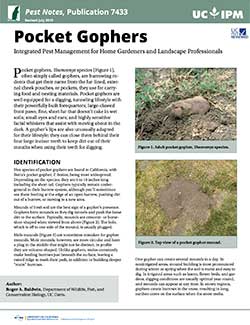
Research Backed Mesh Size
For decades, both galvanized and stainless steel mesh with a 3/4" opening size has been used to protect landscape areas from gopher intrusion. A study from the University of California, Davis conducted in 2009 reiterated this point.
*University of California, Statewide Integrated Pest Management Program, Publication 7433, September 2009 (Revised July, 2019)
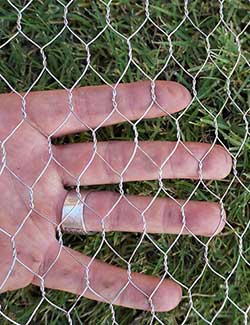
Is Smaller Mesh Better?
When it comes to gopher wire mesh both too small and too large can be problematic. Too large of a mesh can allow young, smaller gophers to pass through while a tighter mesh size can choke roots from nearby trees and plantings. The most ideal mesh size is 3/4" which stops both young and mature gophers while allowing enough room for your other plantings to grow unencumbered.
Under-Sod Installation Example
Gopher Block™ can be installed under a wide variety of different surfaces. One of the most common is under lawn areas. An installation can be accomplished by either the homeowner or a landscape contractor.
Simple, Straight Forward Installation
Looking for Galvanized Steel Mesh?
Gopher Block™ is also available in a stainless steel version. Gopher Block™ HD is constructed of hot-dipped galvanized steel and provides an estimated material lifespan of 7-12+ years when buried below ground.
View details and pricing >

What About Moles?
Although Gopher Block™ is not specifically designed to prevent mole intrusion, we have had customers that have installed it for this application and the gopher wire has proved effective at deterring moles from tunneling into landscape and lawn areas.
"After tilling and clearing the loam from our yard, I installed the gopher wire roll. I then applied another 6 inches of topsoil/compost and then laid 1,800 square feet of zeon zoysia sod. The gopher wire roll is an incredible product and in my mind worth every penny. I have already seen the results. There is an adjacent section where our yard meets the neighbors yard. Given the frequent watering/worms, etc. our yard has become an attractive site for moles. Well, our yard has been perfectly protected from the moles, and our neighbors yard is full of new holes and tunnels. They just cannot seem to penetrate the wire roll. The quality is also impressive. Does not even compare to the junk available at “unnamed big box” hardware store (trust me, I looked!) Anyway, here are several photos of the installation process and the final product. "
-
Colin R.
Austin, TX
What Can Gopher Block™ Protect?
|
Gopher Block™ can protect a wide variety of different surfaces ranging from lawns to planter boxes. Gopher Block™ is engineered for both residential and commercial applications.
|
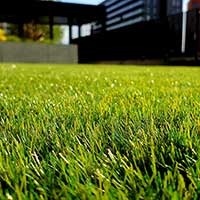
Sod Areas
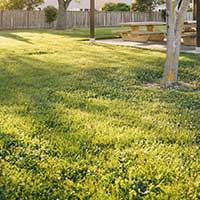
Seeded Grass Areas
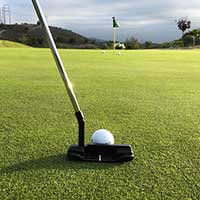
Putting Greens
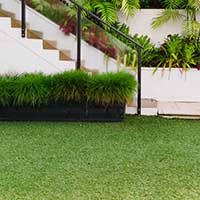
Artificial Grass / Turf
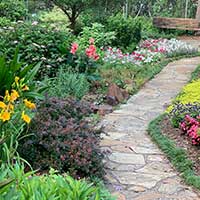
Garden Beds (In-Ground)

Raised Garden Beds
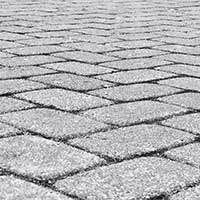
Paver Patios
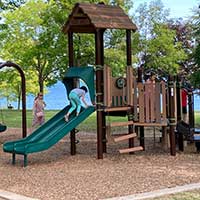
Child Play Areas

Pathways

Sports Fields
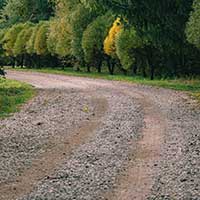
Gravel Driveways
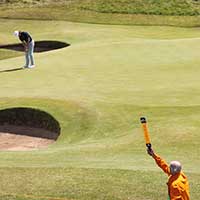
Golf Courses
Ground Staples for Gopher Block™
Each Roll of Gopher Block™ requires 100 ground staples for proper installation. (sold separately)
View Details and Pricing >
Shipping Time
Gopher Block™ typically ships within one business day of order placement. Smaller orders ship UPS / Fedex while larger orders (typically 5+ rolls) ship LTL freight. If your order is shipping LTL freight the carrier will schedule a delivery appointment with you prior to delivery.
Botta Pocket Gophers – California’s Valley Gopher
Paolo Emiliano Botta was born in Turin, Italy in 1802. He was a naturalist and archaeologist who collected birds, mammals, reptiles, and insects throughout California in the 1820s and 1830s and in Mesopotamia.
Botta's pocket gopher is from western North America and is often referred to as valley pocket gopher in California.
Physical Features
They get their name from the two pouches on the sides of their heads to carry and store food. Unlike other animals with pouches, they can open the pouches outward and dump everything out. The Botta's pocket gopher is a medium-sized gopher that when reaching adulthood will be 2.0 to 2.4 inches (18 to 27 cm) with a tail length of 2.0 to 2.4 inches (5 to 6 cm). Their lips close behind their incisor teeth to keep dirt out of their mouths.
Their slightly haired tails work as a visual aid. while walking backward, Gophers, in general, have poor eyesight. Like their tails, their whiskers help them navigate both forward and backward. Rumor has it that the males continue to grow throughout their lives Some males are somewhat larger than others but age has nothing to do with their size.
Their colors vary from light tan to brown or black and a few are spotted or albino. Their colors can change as they molt. It's believed their color resembles the local color of the soil. The Botta pocket gopher does not have the black stripe running down its back like their relatives, known as the southern pocket gopher. Having this stripe or not, is a great way to separate the two species. The name pocket comes from the pouches on either side of their face where they store and carry food.
Native to North and Central North America, pocket gophers are burrowing rodents in the Geomyidae family. There are approximately 5 or 6 genera in the family and around 3 dozen species. The Thomomys genus is known as the western pocket.
Pocket Gophers use their teeth and claws for digging but their claws can wear down so they usually look for softer soil. Botta pocket gophers are found in Texas, California, Colorado, Utah, and Mexico. They reside in different habitats including agricultural land, scrub lands, woodlands, and chaparral, but are limited to barren deserts, rocky terrain, and large rivers. Skeletal remains have been found in Oklahoma dating back 31,000 years.
What To Look For
It's easy to understand what gophers do to make tunnels and mounds but actually seeing them can be a challenge. Keep an eye out for mounds with fresh dirt, you might see one.
French settlers called them “Thomomys bottae” referring to the word for honeycomb or waffle as new arrivals to the US they were not familiar with this animal and their burrows looked like honeycombs and their mounds and indentations looked like waffles.
Gophers can create several mounds in the course of a day. They dig their tunnels, looking for food they push the loosened soil to the surface using their heads and front legs creating mounds shaped like hearts or fans while pushing the debris forward.
A burrow system can be up to 200 yards and is normally one-way. Creating 3 iinch diameter allows them to somersault in order to turn around. A burrow system includes long, shallow systems that are small-scale environments. All openings are plugged in a day. If there is an opening, chances are the gopher is still digging.
A gopher's body is shaped similar to a torpedo with its short, strong legs that play a major part in tunneling and dogging.
By nature, gophers are territorial and solitary except during the breeding season when their young live with the mother. Gophers will aggressively defend their territories as well as areas bigger than their burrow systems. They will keep unoccupied zones between neighboring burrow systems.
In general, gophers breed in the early spring or early summer but in some cases where food is abundant, they can breed all year long. A liter consists of 3 to 5 pups with a gestation of 18 days. They are born blind and hairless. The pups will remain in the nest for 5 to 6 weeks before leaving to create their own territories. A gopher's lifespan is around one or two years,
Eating Habits & Predators
Gophers will eat a lot of vegetation as well as plant parts they find underground. They also consume leaves and plant stems that are near their entrances. Gophers locate their food using their excellent sense of smell. They do not need to seek out water because they get enough moisture in their diet. Gophers eat a lot for their size because they use a great deal of energy from digging. Gophers are very picky about what they eat which is probably due to the need for energy.
Their leading predators are birds of prey that will catch them above ground. Hawks hunt them during the day and owls hunt them at night. Other prominent predators including coyotes, foxes, bobcats, domestic cats and dogs, wait by the burrow entrances and by digging. Some predators can enter the burrows including gopher snakes, rattlesnakes, skunks, some weasels, and badgers.
Gophers And The Ecosystem
Due to their continual digging, gophers loosen and oxygenate the soil while burying vegetation that will enrich the soil. Depending on the weather conditions and soil, a single gopher can move a ton of soil in one year. The vegetation of gopher mounds will vary from one area to another but just the presence of vegetation can increase the variety of plants.
On top of that, gopher holes or burrows can capture runoff allowing water to sink in which will conserve both water and soil. On the downside, extensive burrowing can lead to erosion on slopes. In agricultural areas, gophers are pests and can kill trees. In some cases, other animals will use gopher's burrows and turn plants into meat.
Clear Up The Confusion
Sometimes the word “gopher” is used to describe any burrowing animal but none are anything like pocket gophers. There is no doubt that squirrels are rodents but are not anywhere near related to gophers. Other animals such as chipmunks and prairie dogs have been confused as gophers, wrong!
Gophers Vs Moles
Similar to gophers, moles live alone underground and seldom leave their tunnels. Moles perform similar activities which are also beneficial to the ecosystem. Moles are smaller and their mounds are symmetrically conical. Moles are not rodents, they are insectivores. They prefer areas that are moist to meet their diets of earthworms, snails, grubs, and insects.
Where Can I Find Signs Of Gophers?
Mounds and/or open spaces can be seen along trails in grasslands or in woodland areas where there are clearings for intersections. You will notice more mounds when the soil is moist because digging is easier, which is usually during the spring and fall.
How Often Do People See Gophers?
During the spring and rainy season when vegetation is abundant, sometimes, but rarely, hikers have seen gophers foraging inside their holes. If you see a gopher, stay about 10 feet away and be very quiet. The gopher might emerge to grab some vegetation by the entrance of their burrow.
How Do I Recognize Signs Of Gophers Affecting Their Environments?
During the spring, keep an eye out for seedlings growing in the loose soil of the gopher's mound.
How Do I Recognize Signs Of Gophers Affecting Their Environments?
During the spring, keep an eye out for seedlings growing in the loose soil of the gopher's mound.
|
|
 |
 |
 |
 |

|